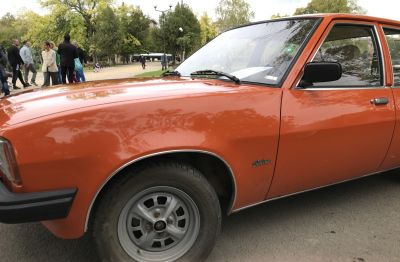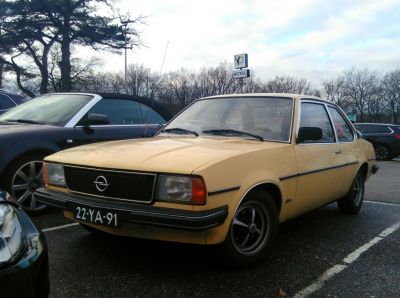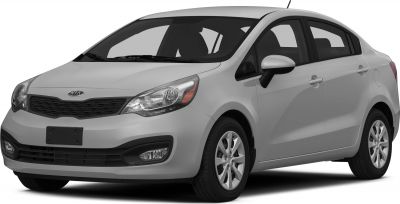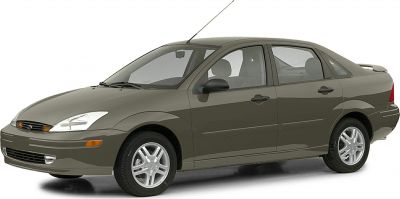 1990 Fiat Tempra (159) Dimensions, Size & Specs
1990 Fiat Tempra (159) Dimensions, Size & SpecsMeasurements of the 1990 Fiat Tempra, engineered for optimal performance and comfort
| Dimensions | |
|---|---|
| Length: | 4354 mm171.4 in14.3 ft |
| Width: | 1695 mm66.7 in5.6 ft |
| Height: | 1445 mm56.9 in4.7 ft |
| Trunk Capacity: | 500 liter17.7 cu ft |
| Weight Specifications | |
| Curb Weight: | 1000-1198 kg2205-2641 lbs |
| Maximal permitted Weight: | 1300-1720 kg2866-3792 lbs |
| Tire Specifications | |
| Tire Sizes: |
|
The Fiat Tempra (159) is a compact sedan produced between 1990 and 1996, offering a balanced combination of size, functionality, and Italian design. Measuring 4354 mm (171.3 inches) in length, 1695 mm (66.7 inches) in width, and 1445 mm (56.9 inches) in height, the Tempra fits well within the midsize sedan category of its era, providing ample interior space for passengers and cargo alike. Weighing between 1000 kg and 1198 kg (2205 to 2641 lbs) curb weight, it maintains a manageable footprint and agility suited for urban and highway driving. The maximum allowable weight ranges from 1300 kg to 1720 kg (2866 to 3792 lbs), reflecting different trims and equipment levels. One of the notable practical features of the Fiat Tempra is its substantial luggage capacity of 500 liters (17.7 cubic feet), ensuring plenty of room for everyday use and longer trips. Tire sizes vary dependent on the model specifics, including 165/70 R13, 175/65 R14, 165/70 R14, and 185/60 R14, which support balanced handling and ride comfort. Overall, the Fiat Tempra (159) sedan from the early 1990s remains an example of functional design, competitive dimensions, and practicality in the compact family car segment.
Discover the standout features that make the 1990 Fiat Tempra a leader in its class
Have a question? Please check our knowledgebase first.
The Fiat Tempra (159) sedan, produced from 1990 to 1996, measures 4354 mm (171.3 inches) in length, 1695 mm (66.7 inches) in width, and 1445 mm (56.9 inches) in height. These dimensions place it in the compact sedan category, offering a balanced footprint suitable for urban and highway driving.
The curb weight of the Fiat Tempra (159) ranges from 1000 kg to 1198 kg (2205 to 2641 lbs), depending on the variant and equipment level. Its maximum permissible weight spans from 1300 kg to 1720 kg (2866 to 3794 lbs), accommodating passengers and cargo safely within these limits.
The Fiat Tempra (159) sedan provides a generous luggage capacity of 500 liters (17.7 cubic feet), which is quite practical for a compact sedan from the early 1990s. This capacity allows for ample storage of suitcases, groceries, or everyday items, enhancing its usability as a family car or commuter vehicle.
For the Fiat Tempra (159), tire sizes include several options to suit different trims and driving preferences: 165/70 R13, 175/65 R14, 165/70 R14, and 185/60 R14. These sizes reflect its compact car status and provide a balance between ride comfort, handling, and fuel efficiency.
Yes, the Fiat Tempra (159) generally fits comfortably into a standard residential garage. With an overall length of 4354 mm (171.3 inches) and width of 1695 mm (66.7 inches), it is smaller than many modern vehicles. Standard garages typically accommodate vehicles up to around 6 meters (20 feet) long and 2.4 meters (8 feet) wide, so the Tempra fits well within these limits, allowing space for opening doors and easy maneuvering.
The Fiat Tempra (159) succeeded the Fiat Regata and is slightly larger in overall dimensions. The Tempra has a length of 4354 mm compared to the Regata’s roughly 4330 mm, and it is somewhat wider and more aerodynamic. This increase in size provided better interior space and improved road presence without compromising maneuverability, reflecting Fiat's evolution toward a more modern compact sedan in the early 1990s.
In the landscape of 1990s compact sedans, the Fiat Tempra (159) holds competitive dimensions. At 4354 mm long and 1695 mm wide, it is comparable to contemporaries such as the Volkswagen Vento and Ford Escort of that era. While not the largest, the Tempra’s sizeable luggage capacity of 500 liters and balanced width give it an edge in practicality and passenger comfort relative to many rivals.
The Fiat Tempra (159)'s exterior dimensions facilitate a roomy interior for a compact sedan, offering comfortable seating for four to five passengers. Its width of 1695 mm (66.7 inches) allows good shoulder room, while the height of 1445 mm (56.9 inches) provides ample headroom. The generous 500-liter (17.7 cubic feet) luggage capacity is particularly notable, offering more storage than many of its peers, making it suitable for family use and extended trips.
The Fiat Tempra (159) curb weights ranging from 1000 to 1198 kg (2205 to 2641 lbs) influence its driving dynamics and fuel economy. Lighter models tend to offer more agile handling and better fuel efficiency, while heavier configurations, often due to additional features or more robust engines, provide increased stability and comfort. This variance allowed buyers to select versions that balance power and efficiency according to their needs.
The Fiat Tempra (159) came with several tire size options including 165/70 R13, 175/65 R14, 165/70 R14, and 185/60 R14. Tires with larger diameters, such as the 14-inch sizes, typically improved ride quality and handling stability, while the smaller 13-inch tires prioritized cost-effectiveness and fuel economy. Each size choice influenced the car’s road grip, comfort, and overall driving experience.
Discover similar sized cars.

| Model Year: | 1979 |
|---|---|
| Length: | 4321 mm170.1 in |
| Width: | 1670 mm65.7 in |
| Height: | 1380 mm54.3 in |

| Model Year: | 1976 |
|---|---|
| Length: | 4321 mm170.1 in |
| Width: | 1670 mm65.7 in |
| Height: | 1380 mm54.3 in |

| Production: | 2011-2015 |
|---|---|
| Model Year: | 2011 |
| Length: | 4370 mm172.0 in |
| Width: | 1700 mm66.9 in |
| Height: | 1470 mm57.9 in |

| Production: | 1990-2001 |
|---|---|
| Model Year: | 1990 |
| Length: | 4355 mm171.5 in |
| Width: | 1695 mm66.7 in |
| Height: | 1445 mm56.9 in |

| Production: | 1998-2005 |
|---|---|
| Model Year: | 1999 |
| Length: | 4362-4369 mm171.7-172.0 in |
| Width: | 1702 mm67.0 in |
| Height: | 1430-1481 mm56.3-58.3 in |

| Production: | 2006-2014 |
|---|---|
| Model Year: | 2006 |
| Length: | 4342 mm170.9 in |
| Width: | 1692 mm66.6 in |
| Height: | 1435 mm56.5 in |

| Production: | 2018-present |
|---|---|
| Model Year: | 2018 |
| Length: | 4342 mm170.9 in |
| Width: | 1692 mm66.6 in |
| Height: | 1435 mm56.5 in |

| Production: | 2019-2022 |
|---|---|
| Model Year: | 2020 |
| Length: | 4340 mm170.9 in |
| Width: | 1983 mm78.1 in |
| Height: | 1470 mm57.9 in |
